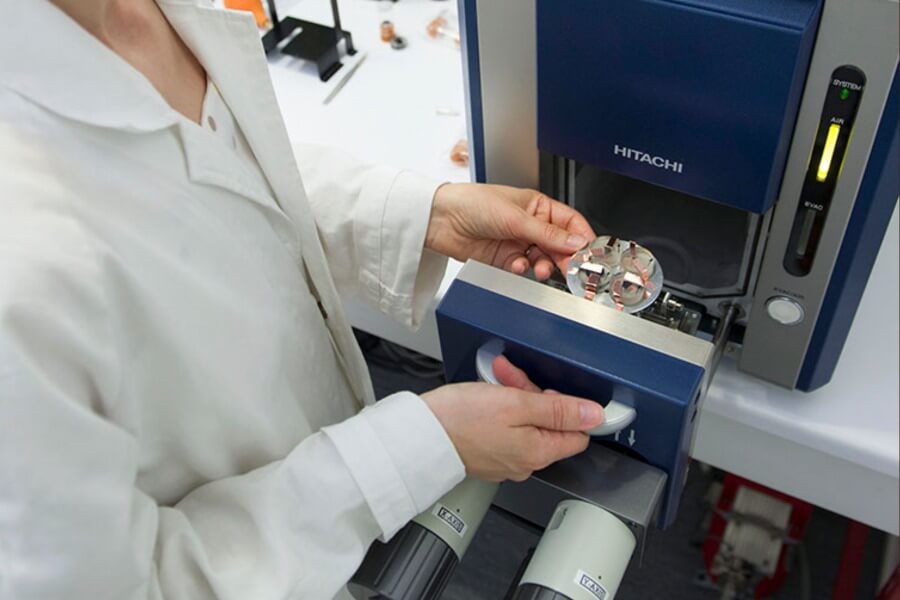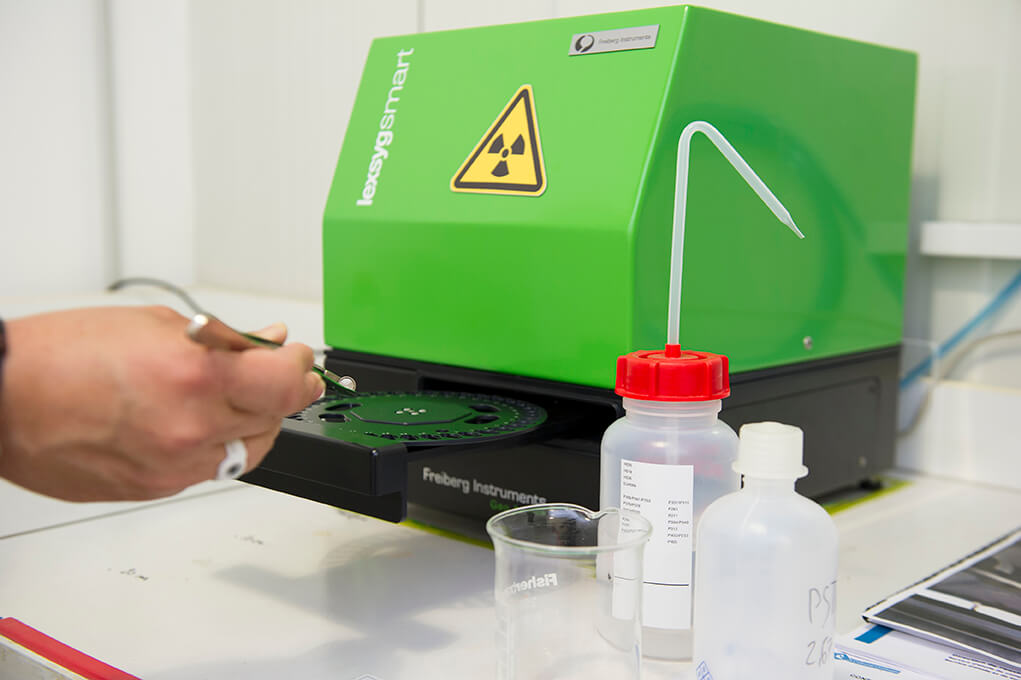
METALLOGRAPHY
Bronze, brass, silver, gold or iron, CIRAM identifies the chemical composition of your metal objects. CIRAM laboratories offer authenticity tests based on metallographic studies.
Metallography, a comprehensive approach to metal works
Before anything else, it is important to define the nature of the work. Bronze, brass, gold or iron, depending on the metal, the methods will not be the same. Discover the fields of application available in our laboratories.
Our scientists determine and study the elemental composition, the level of corrosion and the origin of the alteration of your metal pieces. For more than seventeen years, CIRAM laboratories have been analyzing and studying your metal artifacts with high-tech equipment.
Scanning electron microscopy
Metallography consists of the complete study of a metal. We will define the composition of the metal (major, minor and possibly trace elements). Then we analyze the degree of corrosion of the metal and finally the origin of the corrosion (natural or artificial). This information will form a bundle of clues that will allow CIRAM’s scientific teams to make a judgement on the age of a metal object.
These analyses are performed using optical microscopy, metallographic microscopy and scanning electron microscopy (SEM-EDX).

Thermoluminescence testing, a complement to metallography
For metal objects that exhibit a closed shape, a thermoluminescence (TL) test can be performed on the residual cast core. This additional analysis will provide more accurate chronological information and help confirm the authenticity of the work.

Analysis of bronze, brass and silver
For metals such as bronze, brass and silver, we will determine the composition of the alloy and look for possible formal clues of modernity (aluminum, manganese, phosphorus or chromium for example).
In a second step, we will study the degree of corrosion of the metal which is an important chronological marker for authentication.
The study of corrosion (which is also called patina), moreover, makes it possible to define the origin of the alteration. Is it a natural patina that has developed over time or is it an artificial patina made with acid to simulate the age of the object?
Iron analysis, a different approach
Unlike gold, iron experiences rapid corrosion. The degree of deterioration and the nature of the patina of an iron work are therefore not going to provide interesting clues for precise dating.
To define the age of an iron object, scanning electron microscopy will also be used, but CIRAM researchers will focus on the study of inclusions and impurities to identify manufacturing techniques and deduce a chronology.
Gold, a special metal
Gold has the peculiarity that it does not, or hardly, corrode. The study of gold objects is therefore more delicate and complex. For the authentication of gold, we will be obliged to couple several methods:
- Scanning electron microscopy (SEM-EDX), as for other metals, to observe surface corrosion figures;
- PIXE or ICP-AES methods to identify and quantify trace elements (concentration less than 0.1%).
Contrary to ferrous metals, gold does not erode, or very little. Our scientists then adapt their analytical protocols by opting for a three-step analysis:
- The chemical composition in major, minor and trace elements is determined first. Ancient golds contain many impurities (trace elements), such as lead, platinum, tin, bismuth…. Trace elements have a concentration of less than 0.1%.
- We look for signs of corrosion on the surface of the alloy. Observations are made by scanning electron microscopy.
- Surface deposits are analyzed, to determine their origin and nature.
Metallography, a science with many functions
Metallography offers a comprehensive approach to metal analysis. In this study, our scientists combine several methods to obtain accurate and reliable results. Metallography allows us to define the composition of a work, estimate its date of manufacture and its level of restoration and conservation.
Our research teams use analytical techniques to find objective indicators to estimate the age of a metal as accurately as possible.
For more information or for a quote, contact us.
